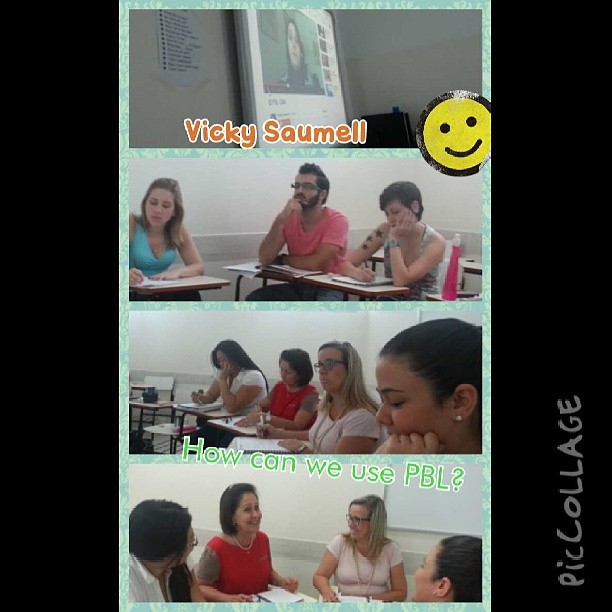How can we help teachers learn, discuss and try out new approaches in English Language Teaching?
With this objective, we've started a blended (part face2face + part online) methodology course at the school where I work when we'll be studying about 3 different approaches: PBL, the Flipped Classroom and Mobile Learning.
The course started at the beginning of September. Each week, we have presential meetings as well as online readings and tasks to carry out.
Following a PBL model, we started our course with a "driving question" :
How can we use PBL in our classes at Cultura Inglesa?
this question was later refined to "How can we create a project which could be used with our students?"
Our final goal would be to think of a feasible project which could be implemented in our classes considering our reality.
But, how could we reach the final goal? What would be our NEEDS TO KNOW?
We needed to know more about characteristics of a PBL lesson, see some examples, talk to teachers using PBL.
We needed to know more about characteristics of a PBL lesson, see some examples, talk to teachers using PBL.
Our group came up with the following steps:
- read different articles about PBL.
- watch different videos about it.
- interview a teacher who uses PBL for teaching English.
- try to imagine our own projects.
As a teacher to interview, I suggested a dear friend, Vicky Saumell, from Argentina, who has successfully implemented a Project-oriented approach at the school where she works.
The interview happened assynchronously, first we brainstormed some questions at our EDMODO group, then I sent Vicky the screenshot of our thread and hoped Vicky would have the time to record a video-response for us.
As a teacher to interview, I suggested a dear friend, Vicky Saumell, from Argentina, who has successfully implemented a Project-oriented approach at the school where she works.
The interview happened assynchronously, first we brainstormed some questions at our EDMODO group, then I sent Vicky the screenshot of our thread and hoped Vicky would have the time to record a video-response for us.
Here, I take the opportunity to thank Vicky again for kindly taking her time to share her experience with us. http://vickysaumell.blogspot.com.br/
For those interested in examples of projects for ELT, check one of Vicky's presentations on slideshare http://www.slideshare.net/vickys16/saumell-meaningful-use-of-web-20-projects

It has been a great opportunity for me not only to study with a group of teachers who are my colleagues but also to try to be a more collaborative teacher.
Our next module is about "The Flipped Classroom".














.png)






